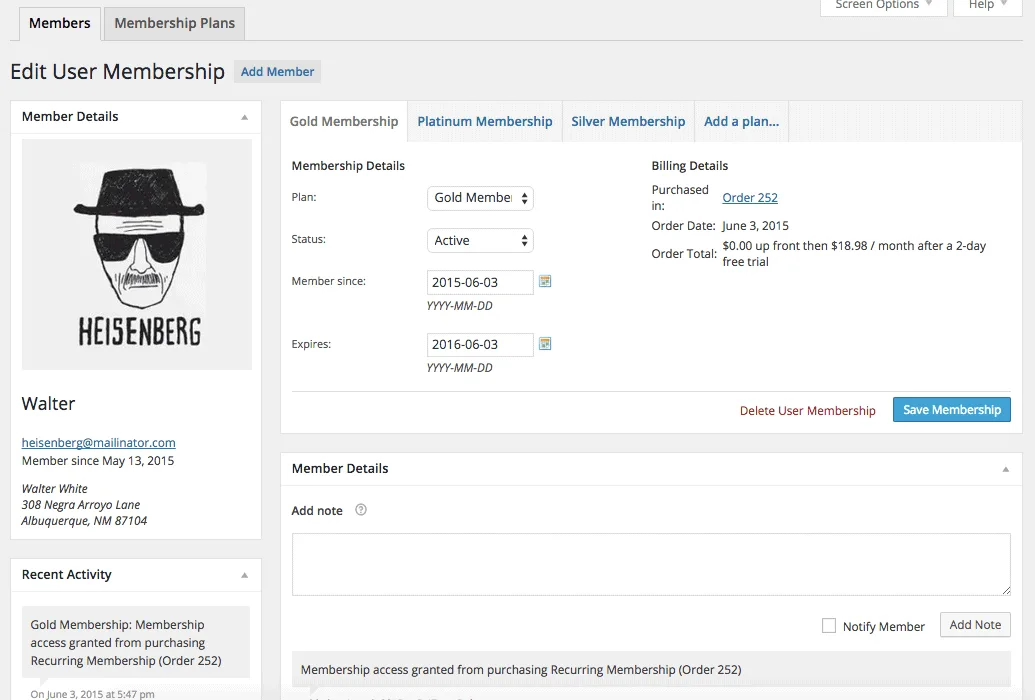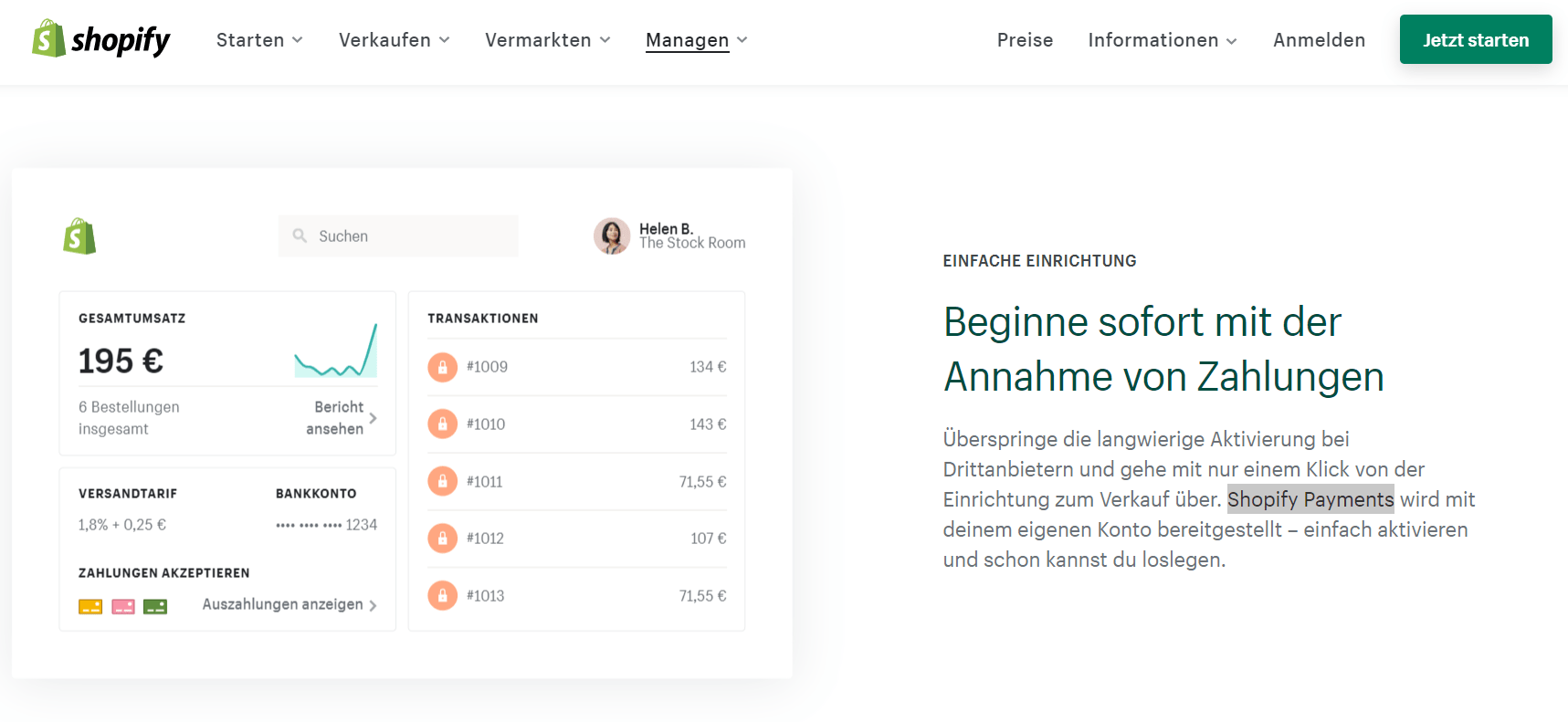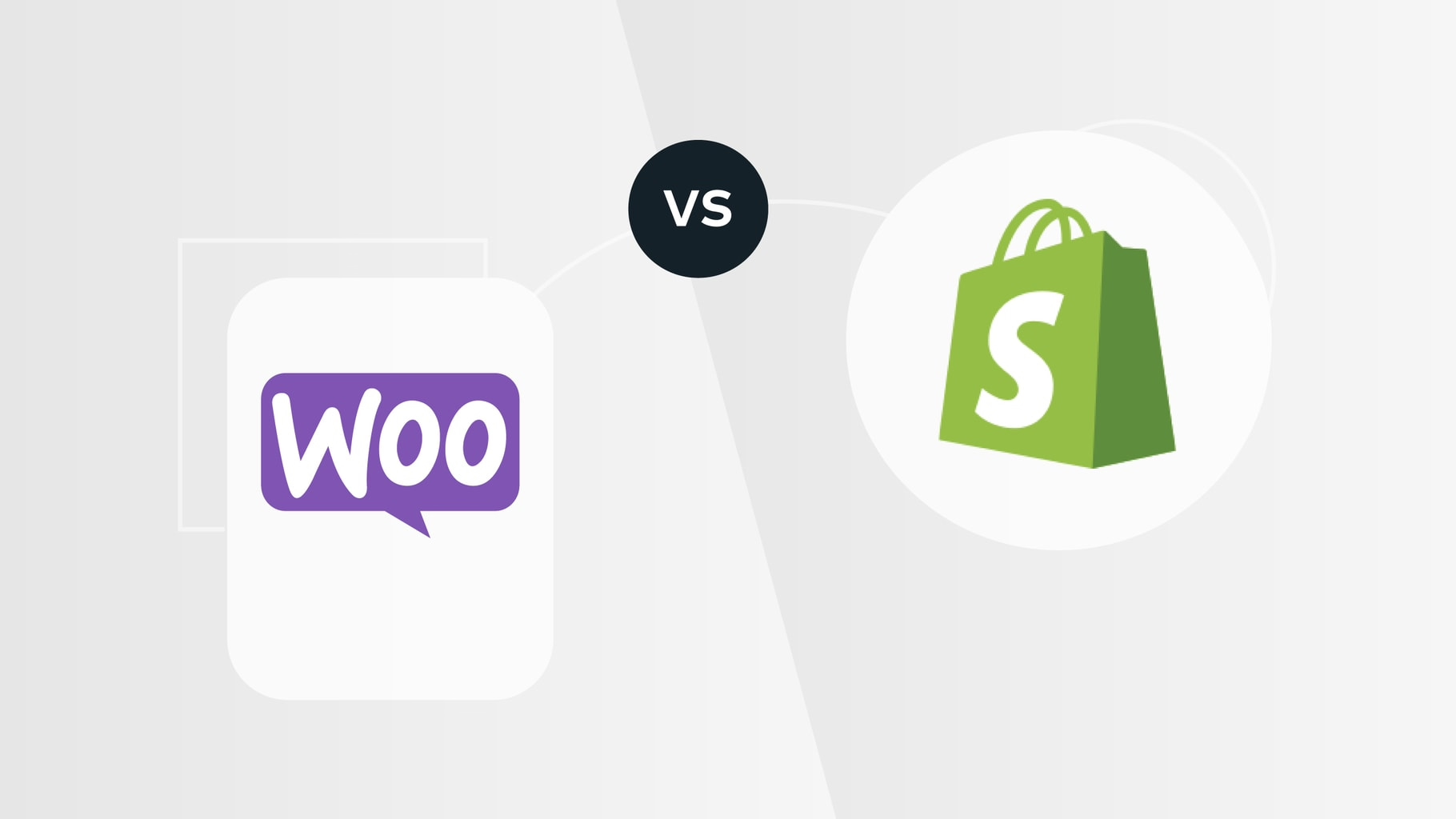Shopify vs WooCommerce – the shop system based on WordPress – which is better? There is no general answer to this question. There are too many different factors, options and requirements for why someone wants to run an online shop. Find out more about the most important comparison criteria.
A mail order company, for example, has completely different needs than, say, a craftsman offering his services. Or an artist who sells completely customised products and wants to use a product configurator to do so.
Both Shopify and WooCommerce have different strengths and weaknesses. In this comparison, I’ll show you which of the two tools may be the perfect solution for you and your business.
Introduction to WooCommerce
Want to know how to set up an online store with WooCommerce and WordPress? Then check out our e-book WooCommerce for Professionals. It contains everything you need to get your web store off to a flying start.
The differences
The biggest difference between WooCommerce and Shopify: Shopify is an all-in-one e-commerce solution, WooCommerce is a plugin for WordPress. You therefore need a WordPress installation and WooCommerce hosting as a basis. We show you what you should consider in our article 4 factors for WooCommerce hosting.
Shopify offers you everything you need for a quick start from a single source. With Shopify, you can set up a simple shop for shipping products in record time. However, this also comes at a price, as we will see in a moment.
WooCommerce, on the other hand, is a free plugin for your self-hosted WordPress website. In contrast to Shopify, WooCommerce gives you a lot of freedom and options in terms of functionality and design. However, there are also a few more hurdles to take care of. For example, hosting and security.

As you can see, the comparison is not easy. That’s why I’ll go into a little more detail here and divide the comparison into different categories:
- Operation and access
- Flexibility and customisability
- Payment methods
- Data control
- Cost comparison with some sample calculations
- Conclusion
Operation and access
It couldn’t be easier to get started with Shopify. It’s intuitive to use and very easy to set up. With Shopify, you can have a simple shop up and running in record time with which you can sell your first products.
Getting started with WooCommerce, on the other hand, is a little bumpier. The initial effort is somewhat greater, as you have to take care of hosting and a WordPress site if you don’t already have one. The learning curve is a lot steeper, as you have to deal with topics such as WordPress, hosting, plugins, security, legal security and more. But even here, you can get a simple shop up and running within a day if you want to.

The good thing about WooCommerce is that you can expand the plugin as you wish and use and customise it for all kinds of purposes. For example, you can create a member area, set up a shop with extra B2B functions for resellers or work with product configurators to offer customised solutions or designs.
Flexibility and customisability
How flexible is it to customise the design and functions? With WooCommerce, you are 100 per cent free when it comes to customisation. There is simply no such thing as impossible with WooCommerce. The shop can be completely customised using WooCommerce themes. There are virtually no limits to flexibility and functionality.
WooCommerce not only allows you to sell simple products, you can also set up a member area for video courses or sell customised handicrafts on the site with a product designer. You can also make optimisations for search engine optimisation (SEO) – to be found better on Google – yourself. There are already ready-made extensions(plugins) for many things, which are often free of charge.

If you can’t find what you’re looking for, you can develop a plugin yourself or commission one from a WordPress agency. Shopify, on the other hand, is rather limited in terms of customisability. There are also a large number of plugins and themes (some of which are chargeable) that you can use for your shop. But the possibilities of Shopify are rather limited – the focus is on selling simple standard and mail order products.
Payment methods
Shopify offers the most common payment methods such as credit card and PayPal. As with almost all providers, a fee is charged which is based on a percentage of turnover. For example, you currently pay 2.4 per cent of turnover and €0.25 per transaction when using credit cards.

The fact that WooCommerce is a WordPress plugin means that not only the common payment methods are supported. For example, credit cards via the payment service provider Stripe (1.4 per cent of sales and €0.25 per transaction) or PayPal. But also pretty much every payment service and provider you can think of. Even internationally. Even Bitcoin and other currencies can be integrated. Here you are absolutely free in your choice.
Data control and security
With WooCommerce, you are 100 per cent the owner of your data and your customers’ data. Only you decide what happens to them and where they are stored. That’s why all the responsibility lies with you. For example, you must ensure that your WordPress installation is secure. A good web host like Raidboxes does a lot of the work for you.
Shopify gives you the option of exporting your customers’ data. However, the service always keeps its own copy of all data on its servers. In return, Shopify claims to take care of all security issues.
WooCommerce Hosting
With WooCommerce hosting, you can launch your own online store quickly and securely and manage it professionally – without any technical hurdles. Check our Raidboxes WooCommerce Hosting now.
Cost comparison including WordPress hosting
There are also significant differences here, which are not immediately apparent at first glance. The initial costs for creating a shop depend very much on your requirements. Depending on your requirements, there are premium plugins for both systems that incur one-off or monthly costs. Both points have not been taken into account in the following calculation, it is only about the running costs.
Here are a few sample calculations to directly compare the costs of the most important shop variants. For Shopify, we have taken into account the various price plans and Shopify Payments. Depending on the payment method used by your customers (other than credit cards), the associated fees can be lower or higher for both Shopify and WooCommerce. With Shopify, for example, additional fees apply to all payment providers outside of Shopify Payments.
Use case 1: Mini shop
One product, ten orders/500 euros turnover per month
| Cost point | Shopify | WooCommerce |
| Hosting/fees per month | 26,00€ | 30,00€(FULLY MANAGED) |
| Credit card fees | 2,4% / 12,00€ | 1,4% / 7,00€ (Stripe) |
| Costs per order | 0,25€ / 2,50€ | 0,25€ / 2,50€ |
| Costs per month | 40,50€ | 39,50€ |
Use case 2: Growing shop
10 products, 30 orders/1000 euros turnover per month
| Cost point | Shopify | WooCommerce |
| Hosting/fees per month | 26,00€ | 30,00€ (FULLY MANAGED) |
| Credit card fees | 2,4% / 24,00€ | 1,4% / 14,00€ (Stripe) |
| Costs per order | 0,25€ / 7,50€ | 0,25€ / 7,50€ |
| Costs per month | 57,50€ | 51,50€ |
Use case 3: Medium shop
50 products, 150 orders/3000 euros turnover per month
| Cost point | Shopify | WooCommerce |
| Hosting/fees per month | 67,00€ | 50,00€(PRO tariff) |
| Credit card fees | 2,1% / 63,00€ | 1,4% / 42,00€ (Stripe) |
| Costs per order | 0,25€ / 37,50€ | 0,25€ / 37,50€ |
| Costs per month | 167,50€ | 129,50€ |
Use case 4: Larger shop
500 products, 1500 orders/90,000 euros turnover per month
| Cost point | Shopify | WooCommerce |
| Hosting/fees per month | 254,00€ | 200.00€(BUSINESS XL tariff) |
| Credit card fees | 1,8% / 1.620,00€ | 1.4% / €1,260.00 (Stripe) |
| Costs per order | 0,25€ / 375,00€ | 0,25€ / 375,00€ |
| Costs per month | 2.249,00€ | 1.835,00€ |
Conclusion: WooCommerce vs Shopify
Shopify is made for people who want to have a shop as quickly and easily as possible without any great technical interest or understanding. And in which they sell simple standard products for shipping. With Shopify, you don’t need to worry about anything else and can get started in record time. Shopify pays for the development of the platform and hosting via the fees. More sales and turnover mean more fees, which can be seen very clearly in the cost comparison.
WooCommerce is for all makers! And – also in terms of cost comparison – for all cases where you need more than a small shop. WooCommerce is perfect for anyone who wants to own a completely customised shop. And who are not afraid to do it themselves – or to look for a service provider.
With WooCommerce, you shouldn’t be afraid of technology. At the same time, you need to be willing to acquire new knowledge. An interest in web technology is essential here, as is the willingness to take responsibility for the security of the shop.
Your questions about WooCommerce vs. Shopify
What questions do you have about our comparison? Please feel free to use the comment function. For more insights on WordPress, web design or online business, follow Raidboxes on Facebook or LinkedIn – or subscribe to our newsletter.

Leave a Reply